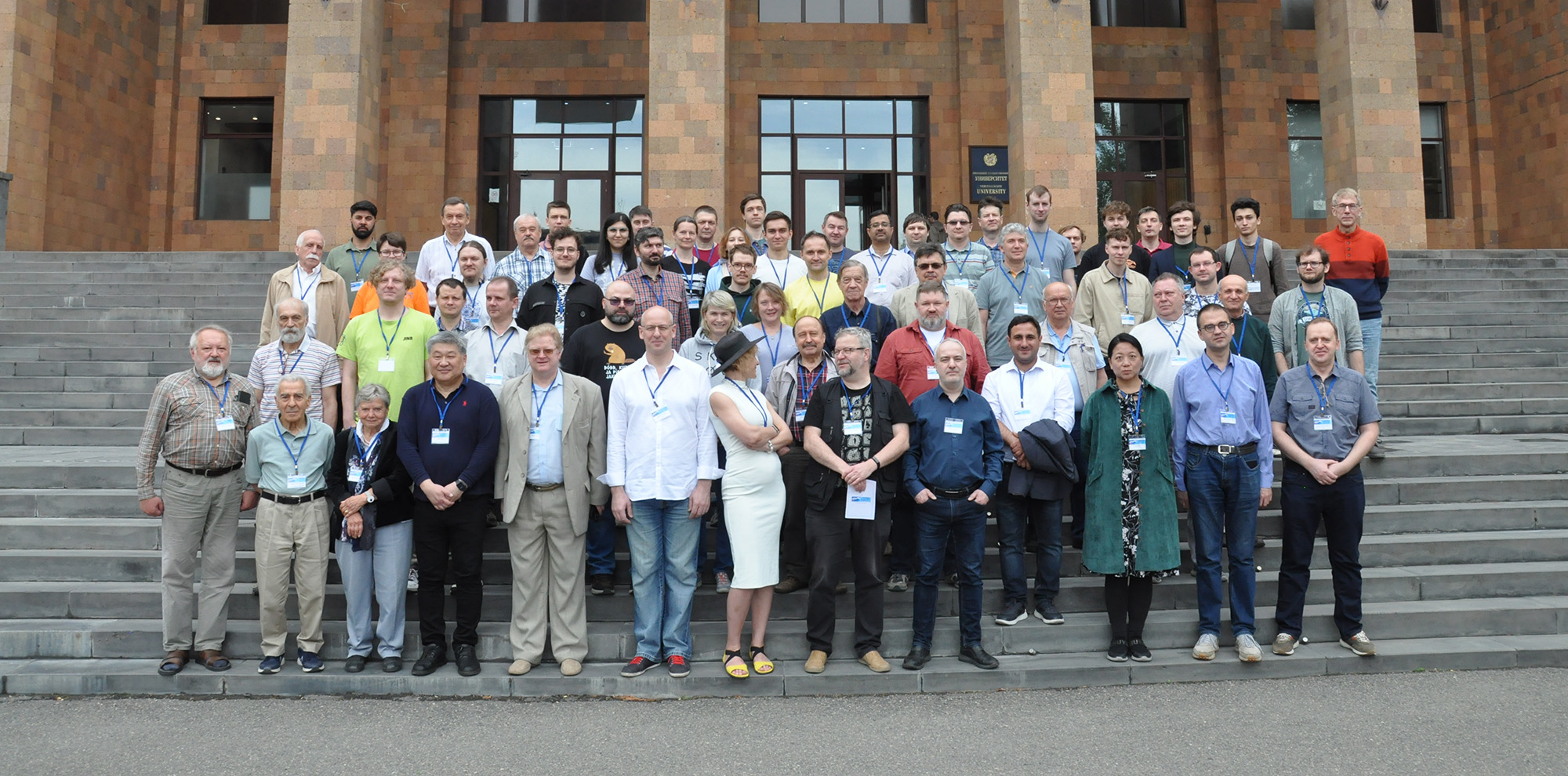Discussing SPD Experiment in Yerevan
News, 13 May 2025
The 9th meeting of the international SPD (Spin Physics Detector) Collaboration is taking place in Armenia on 12–16 May 2025. The SPD Detector is being developed to study spin effects in polarised proton and deuteron beam collisions at the NICA Accelerator Complex. At a meeting at the Alikhanyan National Science Laboratory (AANL), the researchers are discussing the progress of the creation of the experimental facility, exchange expertise, and share ideas on developing the collaboration.
SPD Collaboration Board Chair, an AANL leading researcher Armen Tumasyan made the first presentation. He spoke about the activities of the SPD Collaboration Board, SPD’s main management body. Its tasks include coordinating the scientific activities of the participants, forming executive bodies (Technical and Executive Boards, Publication Committee), and appointing official representatives of the collaboration.
In November 2024, JINR Deputy Chief Engineer Nikolay Topilin was appointed SPD Chief Designer. As a result of voting in April 2025, DLNP JINR Deputy Director for Science Alexey Guskov and Head of the Elementary Particle Physics Laboratory of the Petersburg Nuclear Physics Institute Victor Kim were re-elected by board representatives for the positions of the SPD Spokespersons. The term of Head of the VBLHEP JINR Scientific and Experimental Department of Spin Structure of Hadrons and Rare Processes Alexander Korzenev as the project’s Technical Coordinator was extended. A MLIT JINR senior researcher Danila Oleynik was appointed the new Software Coordinator, with Artem Petrosyan and Andrey Kiryanov as his deputies. Armen Tumasyan noted that a new SPD Collaboration Board will be formed in 2025.
Victor Kim spoke about the preparation of the SPD Project. In accordance with the recommendations of the January 2025 meeting of the JINR Programme Advisory Committee (PAC) for Particle Physics, the participants of the collaboration began actively creating computing infrastructure and developing detectors and subsystems of the first stage of the SPD Experiment:
- the superconducting solenoid,
- the muon system,
- the straw tracker,
- the Micromegas-based central tracker,
- the zero degree calorimeter (ZDC),
- the beam-beam counter (BBC),
- the end-cap electromagnetic calorimeter (ECal).
Victor Kim noted that in April 2025, the first prototype of a ZDC detector was successfully installed at the second beam crossing point in the NICA Accelerator Complex. With the start of the collider’s operation, the detector will provide the first experimental data.
The collaboration continues developing international cooperation. Shandong University, China, officially applied for participation. In addition, negotiations are underway with other Chinese scientific teams.
Deputy Head for Scientific Work of the VBLHEP Accelerator Department Valery Lebedev discussed the progress of the creation of the NICA Accelerator Complex, primarily focusing on the injection complex. Plans for the new run, which started in February 2025, include achieving an intensity of xenon ions exceeding the value of 2·108.
The team operating the Booster made significant progress. During the last session, the “golden orbit” of the beam was found, which resulted in beam loss rates of <10-20%. The term "golden orbit" refers to the trajectory with maximum beam transportation efficiency. By optimising the operation of HF systems and reducing the growth rate of the magnetic field, specialists minimised particle loss at the beginning of the acceleration cycle.
The installation of rapid beam extraction equipment, necessary for the functioning of the collider, finished at the Nuclotron at the end of April 2025. Once the western arc of the NICA Collider was assemblied, preparations began for its cooling and test power-up. Beam extraction as part of the BM@N (Baryonic Matter at Nuclotron) Experiment is scheduled for June. It will ensure reliable operation of the injection complex. The first collisions with measurable luminosity, as Valery Lebedev emphasised, are expected in the first half of 2026. Further plans include preparations for a test polarised deuteron run.
The second part of the plenary session consisted of presentations by coordinators of the SPD Project. A DLNP JINR senior researcher Amaresh Datta discussed the progress of physics studies at SPD. A leading researcher at Moscow Engineering Physics Institute (Russia) Evgeny Soldatov shared the results of the work of a group involved in the physics programme of the first stage of the SPD Experiment. Head of the VBLHEP JINR Scientific and Experimental Department of Spin Structure of Hadrons and Rare Processes Alexander Korzenev presented an overview on the progress of the construction of the SPD Detector and plans for the creation of its key subsystems. A MLIT JINR senior researcher Danila Oleynik made a presentation on the development of the computing infrastructure of the SPD Experiment.
During the week, the participants of the SPD Collaboration will discuss in detail the progress of work on the facility’s main subsystems, electronics, and software. Special attention will be paid to physics research programme of the first stage of the experiment. More than 160 scientists from all over the world are taking part in the 9th SPD Collaboration Meeting in a hybrid format. The programme of the event includes over 60 presentations on the research of the spin structure of polarised particles in high-luminosity collisions and the development of the future experimental facility.
